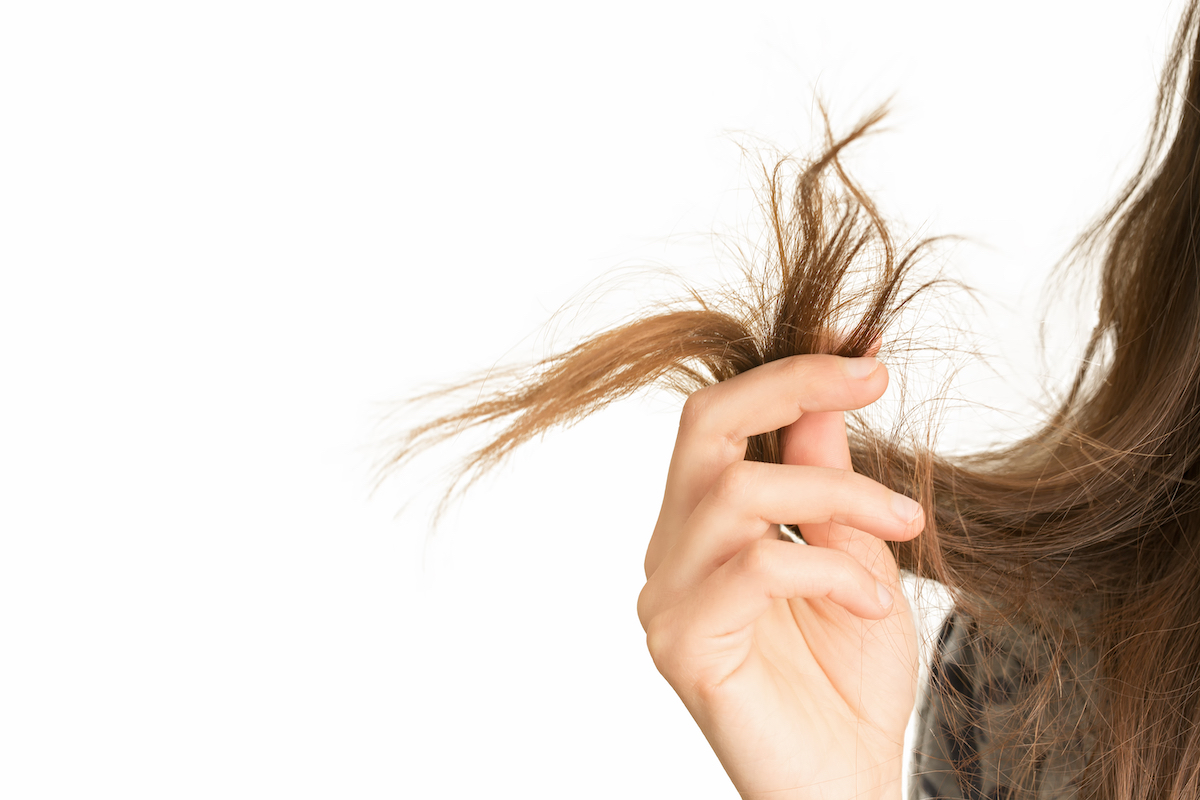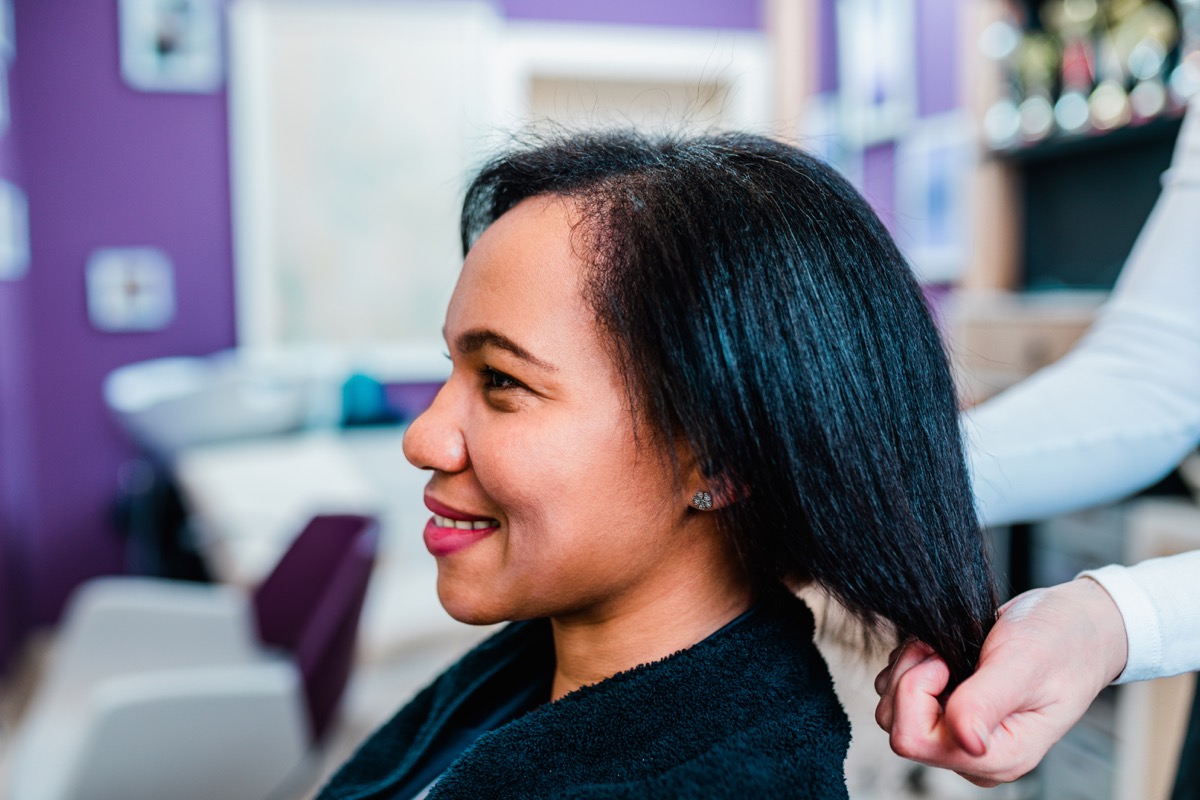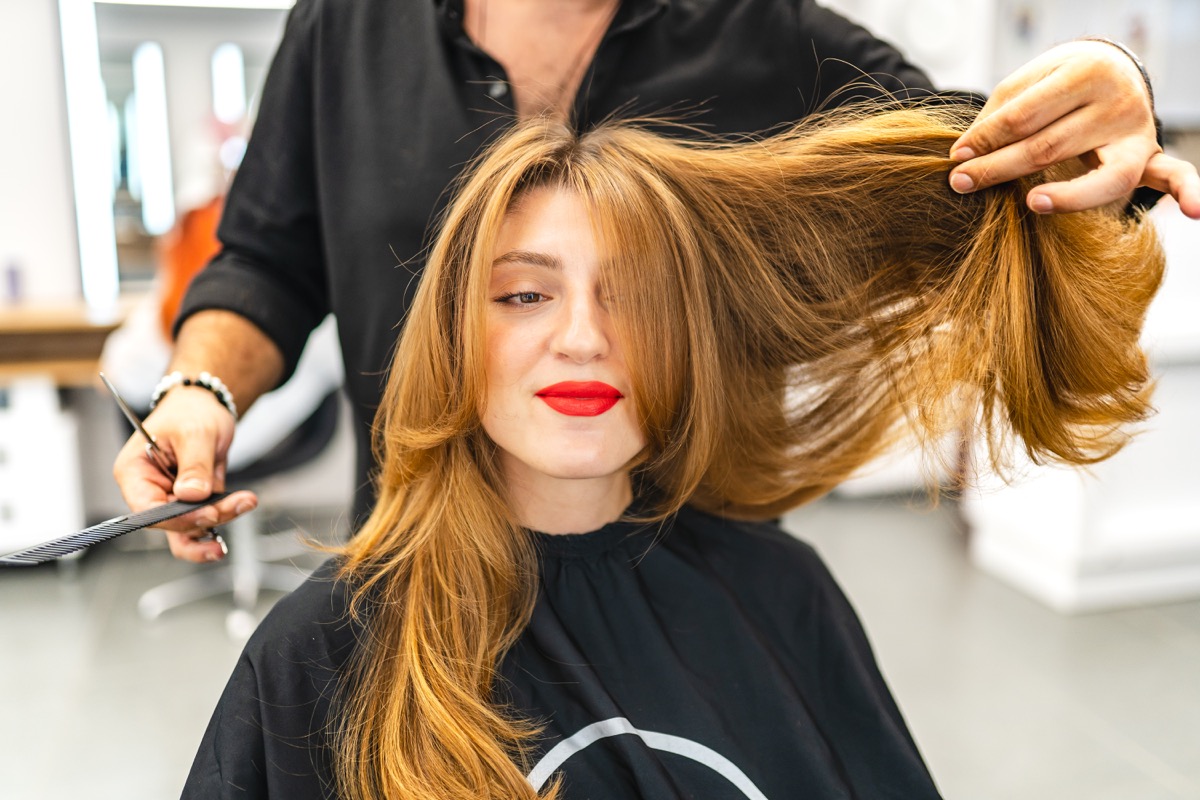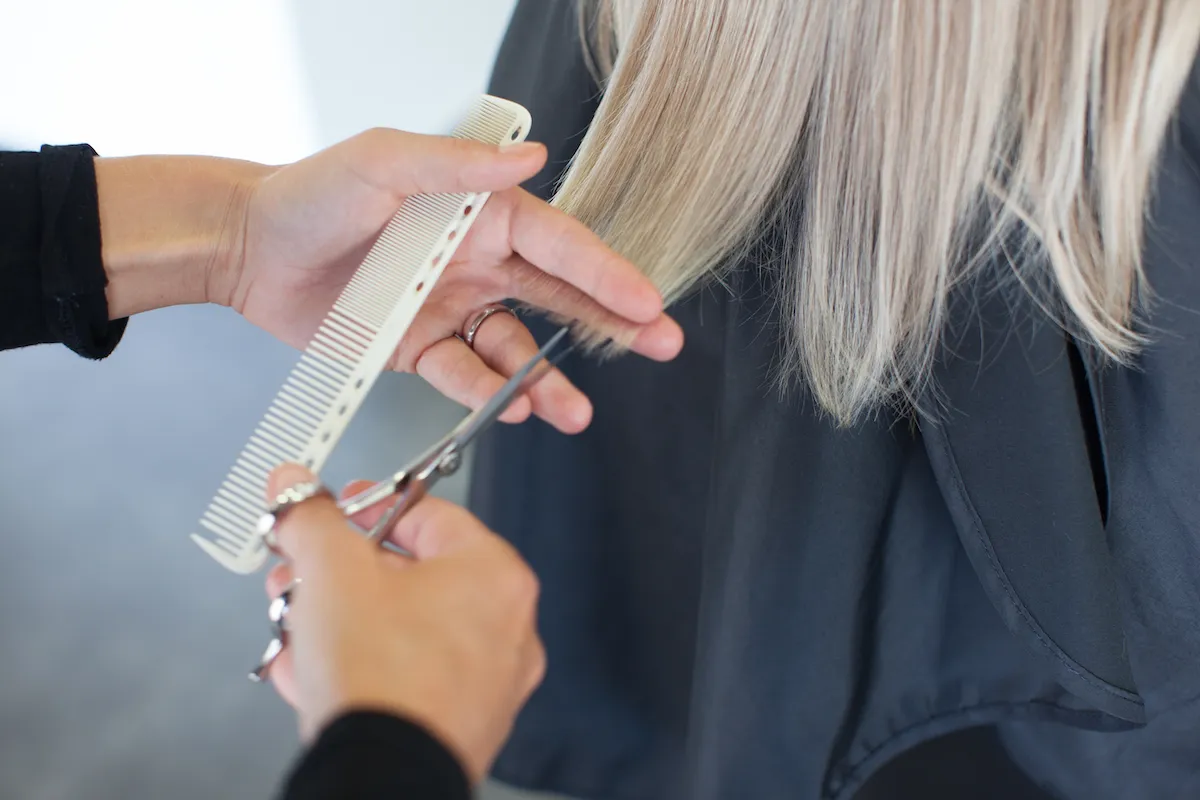How to Get Rid of Split Ends, According to Hairstylists

Styling can elevate an average hair day, but even the greatest looks will fall flat if your tresses are dry, dull, or damaged. Having split ends—sometimes known as trichoptilosis or schizotrichia—is one of the most visible signs that your hair care routine is missing the mark. What’s worse, your frayed ends can sometimes extend up the hair shaft and compromise the strength of your strands. But if you’re wondering how to get rid of split ends, there are a few simple ways to get back your gorgeous, healthy locks, hairstylists say.
RELATED: Heatless Hair: 8 Best Gentle Techniques for Curling and Straightening Your Strands.
What are split ends?

Split ends occur when the ends of the hair—the oldest and most fragile parts—literally separate into two or more pieces.
“Hair is like any other fiber in that when it gets very dry and worn, it becomes brittle and can split, starting at the ends and continuing up the mid-shaft,” explains Ken Paves, a celebrity hairstylist and founder of Hairdo by Ken Paves Collection. “This causes hair to look and feel dry, rough, frizzy, and dull.”
Why do I have split ends?

There can be many contributing factors to getting split ends, but most often, they’re caused by dehydration and styling abuse.
“Split ends can occur for many reasons, but they mostly happen to hair that’s over-styled with hot tools, coloring treatments, relaxers, and everyday wear and tear. Often people who always use flat irons suffer with split, dry hair,” explains Elba Rodriguez, ambassador for John Frieda House of Frieda.
Certain hair products—especially those containing alcohol and fragrance—can also be damaging and dehydrating.
“Environmental aggressors like sun and pollution also affect the quality of your hair, making it more prone to damage, which can cause split ends,” Paves says. “Additionally, diet affects skin, hair, and nails.”
Are split ends bad?

Split ends may indicate that your lineup of hair care products is subpar or that your hair has undergone excessive mechanical stress. If you notice fraying at the end of your tresses, this is typically a sign that it’s time to reassess your hair care habits.
“Split hair is never good,” says Rodriguez. “While there are many products to help mask and help mend split ends, left uncut, splitting hair can travel up the hair shaft and cause the hair to break at uneven lengths and force people into shorter styles.”
RELATED: 10 Best-Kept Secrets to Strong and Shiny Hair, Experts Say.
How to remove split ends

Get your hair cut.
Whatever you do, don’t try to fix split ends by picking at the damaged hair or pulling the ends off. This can cause your strands to split further up the shaft, causing more visible problems in the long run.
Once your hair splits, you cannot repair it or reverse the damage with conditioners or other hair care products. So, getting your hair cut or trimmed by a professional at a salon is, hands down, the best way to remove split ends.
Avoid candle-cutting techniques.
To remove split ends, some people opt for a Brazilian candle-cutting technique known as Velaterapia, in which hairstylists twist various sections of hair and run a burning candle underneath. After burning off the loose split ends, they wash the hair and apply a deep conditioning mask, following this up with a blowout for a perfect finish.
However, despite photo-ready results in the short term, many hair care experts say this can actually damage the hair cuticle and leave your hair strands worse for wear in the long run. And that’s if you’re comfortable letting someone set your hair on fire, which is no small risk to consider.
RELATED: How Humidity Is Ruining Your Hair—And What to Do About It.
How to remove split ends without cutting your hair or losing length

Shorten your time between trims.
It may sound counterintuitive, but the best way to remove split ends and keep your hair healthy without losing length is to make frequent trips to the salon. People who are prone to split ends should plan to see their hairdresser every six weeks for a trim.
If you pair this with a plan to prevent future damage, you should start to see fewer split ends with time. “Routine haircuts and trims can remove split ends, but prevention is always best,” says Paves.
Try an at-home split-end trimmer tool.
If you notice hair breakage despite frequent trips to the salon, you might benefit from buying an at-home hair trimming tool such as the Split Ender Pro. However, you’re unlikely to achieve professional results as you would with the help of a hairstylist.
“I don’t practice alternative techniques to remove split ends other than cutting with scissors. There are many split ends cutting tools available—not my first choice—but if you decide to go this route, read all the reviews before purchasing to decide whether or not to try it,” advises Paves.
RELATED: The 5 Best Haircuts for Fine Hair, Stylists Say.
How to disguise split ends

Add hair extensions.
One way to hide split ends is by adding healthy-looking hair extensions.
“This not only disguises split ends but also protects my clients’ hair from styling abuse. Hairdo extensions come in a variety of styles and options to create any look without excessive styling but also add volume and length to cover almost any amount of damage,” Pave says.
Wear your hair up and accessorize.
Tucking your hair into a bun or braid can also draw attention away from split ends until you have time to make it to the salon for a trim. Stylish chignon buns are particularly effective in concealing the ends of your hair, though you can also experiment with styles that include scarves, clips, and other eye-catching accessories to distract from the damage.
Use serums or slick sticks to keep split ends in place.
Brittle hair or breakage can lead to flyaways. This makes split ends much more noticeable to onlookers since they tend to frame the face.
To tame these, try using hair serums, leave-in conditioners, or hair wax slick sticks—all of which can keep your strands in place. Though they won’t get to the root of the problem, they’ll give you a more polished look and prevent highlighting the problem.
RELATED: 7 Ponytail Styles That Instantly Upgrade Your Look, Hairstylists Say.
How can I prevent split ends?

Align your hair care to your hair texture.
Styling your hair in alignment with its natural texture can help you avoid over-styling with hot tools. For instance, you’re less likely to see split ends or breakage if you choose styles that enhance your curly hair, rather than working against it with a straightener or chemical treatments.
“A good hair care system that specially addresses the needs of your hair texture and type, and a styling routine that doesn’t put too much stress on your hair and cause damage” can go a long way, says Paves.
Pick the right hair repair products.
Though hair-repairing conditioners and hair masks won’t fix the damage that’s already been done, they can help prevent split ends in the future.
“When it comes to split ends, products are our friend,” says Rodriguez. “My personal favorite is John Frieda 3-Step Blonde + Repair System for in-the-shower care and John Frieda Frizz Ease Secret Weapon Touch Up Cream for dry hair.”
You can also protect your hair from split ends by spraying the bottom two inches of your tresses with a solution of water and olive oil. Reapply this DIY hair mask once per week to improve your hair’s health and texture, ultimately reducing breakage.
Dry your hair carefully.
How you dry your hair can also affect whether you develop split ends. If you towel dry hair, use a microfiber towel or soft T-shirt to go from wet hair to damp hair, treating the hair with protective products before moving on to any drying tools. Avoid any high-heat settings on your blow dryer or even skip heat drying entirely to preserve the hair’s natural oils.
RELATED: The 7 Best Haircuts for Frizzy Hair, Stylists Say.
Conclusion

By taking care of your hair with careful drying and styling practices, protective hair products, and regular trips to the salon, you should notice fewer split ends over time. Prevention is key, experts say, but because some split ends are inevitable, regular trims are another important tool in your hair care arsenal.